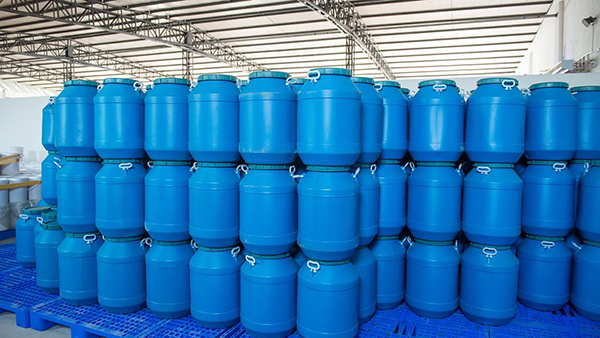Imine manufacturers use DFT method to study the mechanism of dehydrogenation coupling reaction of imine and alkyne catalyzed by Mn(I). Through systematic calculation and analysis, we have the following findings:
① In the process of catalyst initiation, the mechanism of deprotonation assisted by bromine anion is more advantageous than that assisted by reactant imine, which is slightly different from the mechanism proposed by predecessors;
② In the mechanism of isoquinoline product 3, the intermediate Int4 can directly undergo the process of double bond transfer to ring and β-H elimination to form the product;
③ In the process of C-H activation dehydrogenation, the process of first dissociating one molecule of CO and then synergetic dehydrogenation is more advantageous, so the active catalyst in this reaction is intermediate A.. To sum up,
We concluded that the reaction experienced catalyst initiation assisted by bromide anion, insertion of alkynes, double bond migration to ring, and elimination of β-H.

Catalytic cycle process of C-H activated dehydrogenation. We studied the details of each step in detail, and determined the dominant mechanism, which was consistent with the experimental phenomenon. It is hoped that the mechanism research of Huai 'an phthalimide manufacturers can provide a theoretical basis for C-H activation reaction similar to transition metal catalysis.
All DFT calculations are carried out in Gaussian09. The geometric configurations of all reactants, intermediates, transition states and products involved in the reaction were optimized by gas phase. In the optimization, LANL2DZ pseudopotential basis set is used for Mn element [10], and 6-31G(d) all-electron basis set is used for c, h, o, n and other elements. Through frequency analysis and calculation, it is determined that the obtained intermediate is the minimum stable point (zero imaginary frequency) representing the potential energy surface, and the obtained transition state has only one imaginary frequency with correct vibration direction.
The intrinsic reaction coordinate calculation (IRC) of transition state is used to confirm that this structure really connects two related minima. Considering the influence of solvent, this paper uses M06-L method to calculate the single point energy of all optimized structures under SMD solvation model [12], and chooses 1,4-dioxane as solvent according to experimental conditions. In the calculation, SDD pseudopotential basis set is used for Mn element [13], and 6-311+g (d, p) all-electron basis set is used for C, H, O, N and other elements. All Gibbs free energies in this paper are the sum of thermodynamic correction of gas phase Gibbs free energy and solvated all-electron energy [14].
Considering the influence of entropy effect, we refer to the previous work experience [15], and carry out+2 for the change of relative free energy in the elementary step (1:2 or 2:1) where the composition changes. 6 (or-2. 6) Correction of 6)kcal/mol.